Presentations
I love presenting and am always interested in doing more. My previous presentations give you an idea of what I usually talk about, though my long experience means I can present on a wide range of design topics.
Please let me know if you’re interested in me presenting for your organisation or event.
Upcoming presentations
No Results Found
The page you requested could not be found. Try refining your search, or use the navigation above to locate the post.
Previous presentations
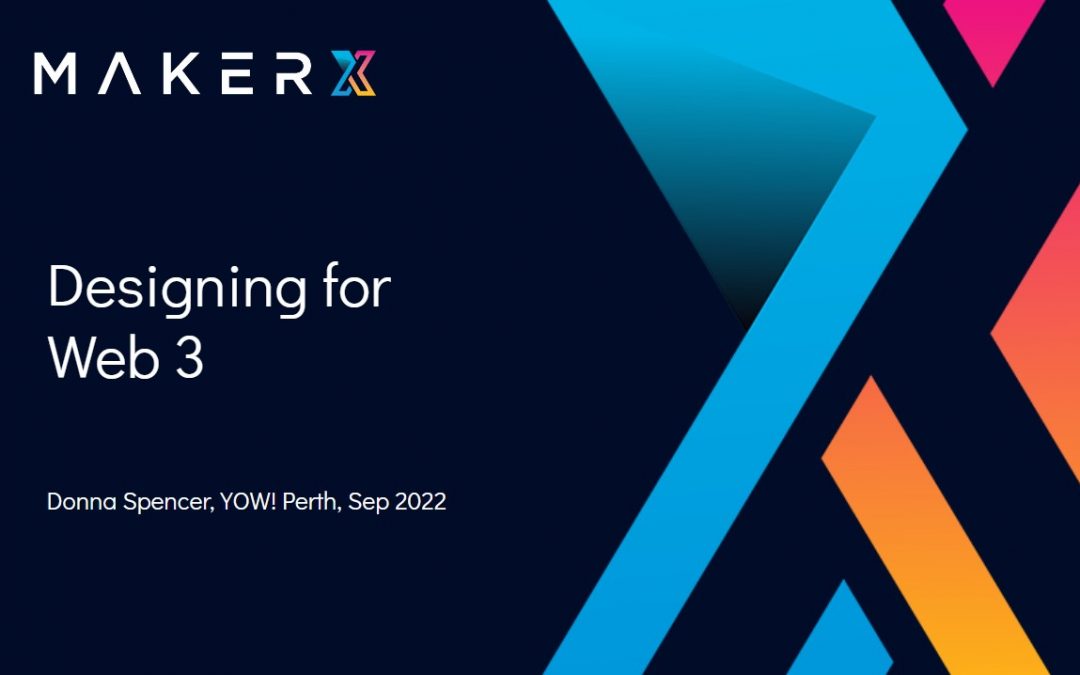
Designing for web 3
As more companies look at opportunities to use web3 to achieve business goals, designers will increasingly need to understand how to design for it. Of course, web3 isn't just one thing - you might need to design for the metaverse, finance applications, NFT projects...
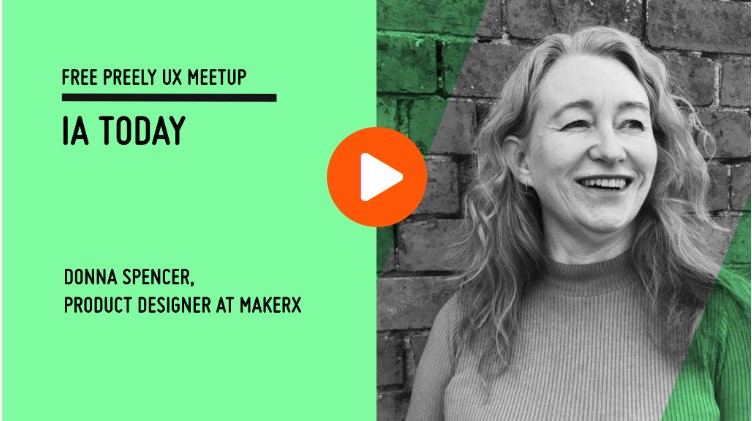
IA today
This presentation was about information architecture is, and how it has changed from how it is described in most IA books.

Designing the right thing
When we have a good idea, we often just want to dive in and get started. But how do we know the idea is actually good? Learn some design thinking methods to help you ‘design the right thing’ instead of ‘designing the thing right’. We’ll explore some simple ways to make sure you are on the right path, and be confident that it is the right path.
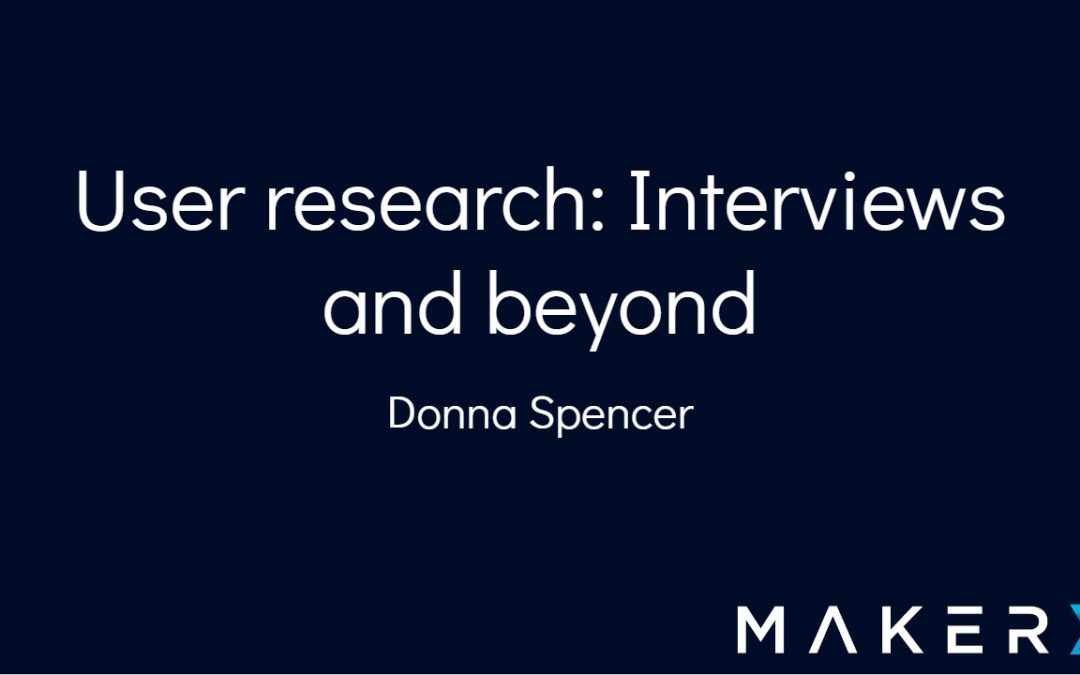
User research: Interviews and beyond
There are many ways to learn about users. The technique we hear most about is interviews, but there are other ways. Join this fast-paced, highly interactive session to experience three other ways to learn about users (and yes, we'll talk about interviews as well).
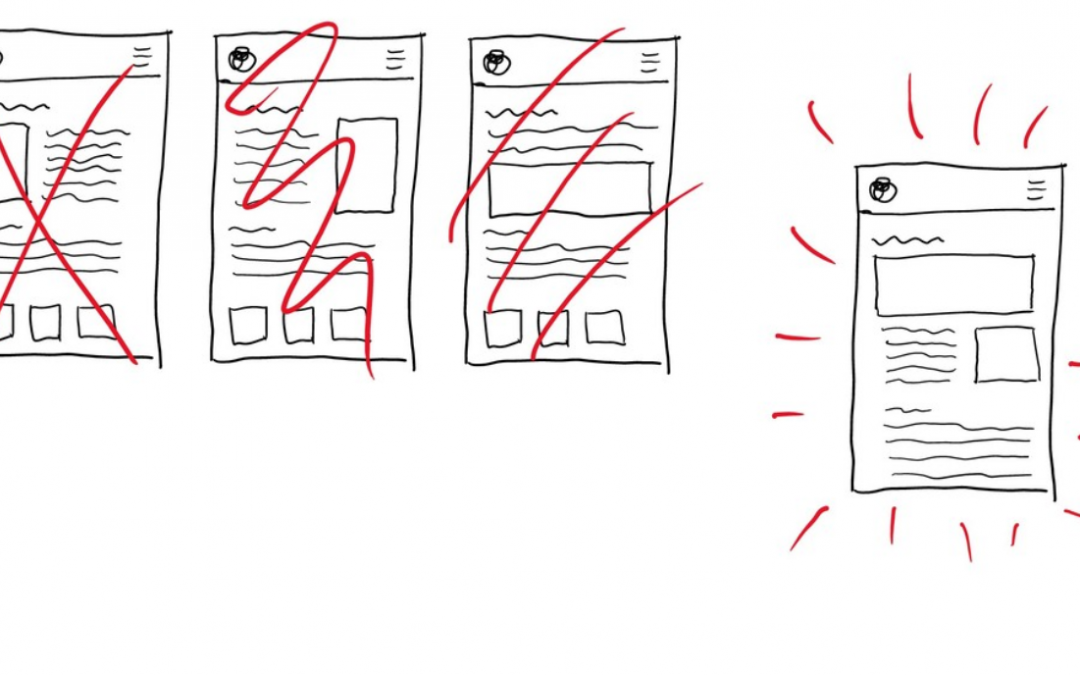
Presenting design work: And getting great feedback
In this talk, you’ll learn how to present design work in a way that gets great (i.e. critical, not complimentary) feedback every time.
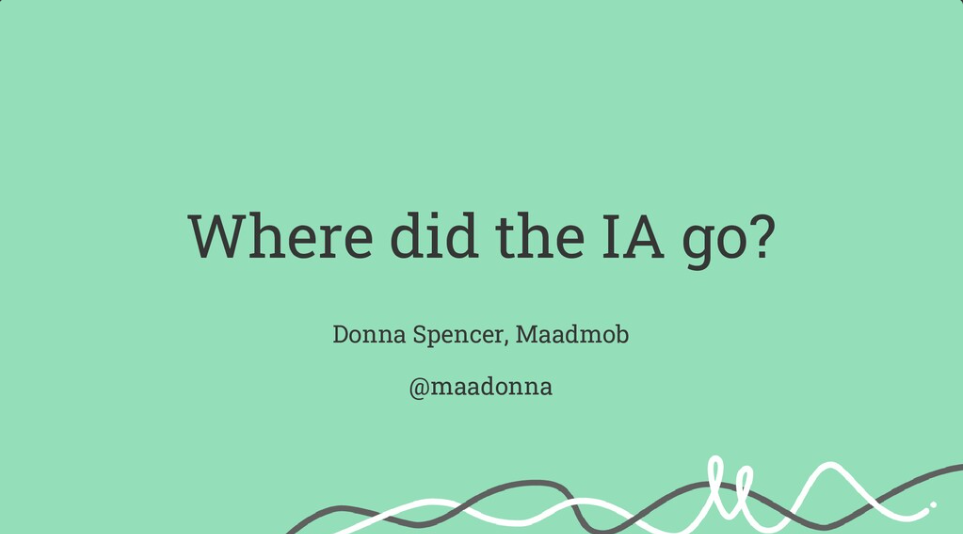
Keynote: Where did the IA go?
Keynote presentation for the Italian IA Summit, December 2020: https://architecta.it/summit/
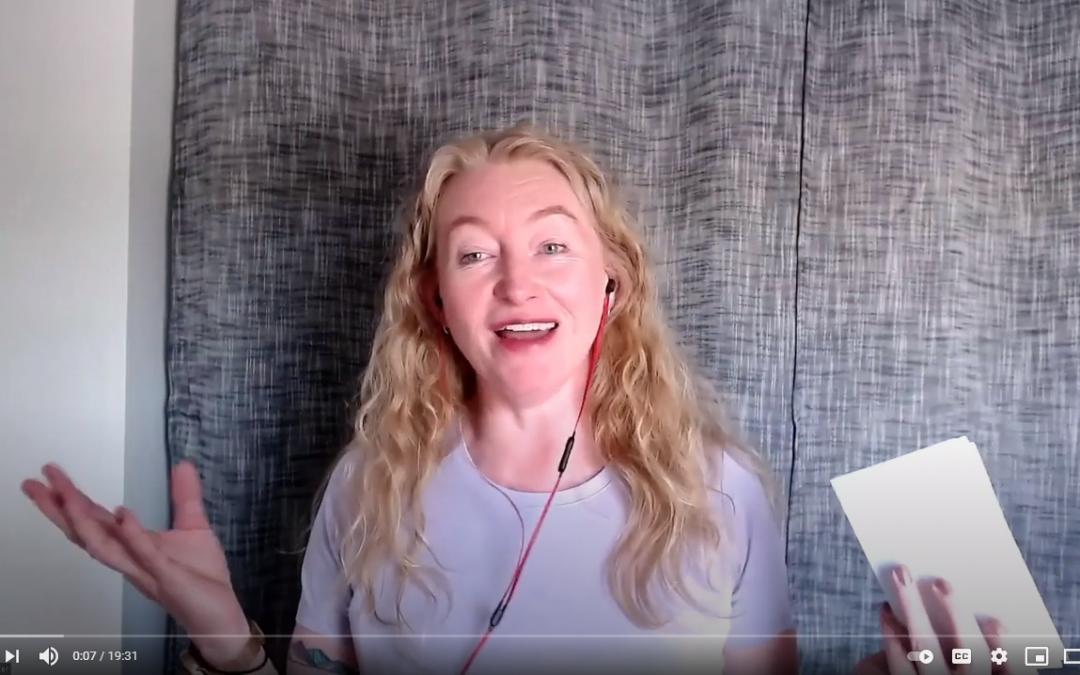
Presenting design work: And getting great feedback
As designers, we spend a large amount of time talking about our work - probably as much as doing the work itself. Sometimes our clients understand what we're talking about and know how to respond, but not always. Sometimes they seem to comment on things that aren't...

Planning design thinking workshops
In this talk Donna will cover what it takes to plan a great design thinking workshop – from goal setting, structuring and choosing activites. Then she’ll talk about what it takes to manage the room itself – getting people warmed up, making them feel safe, encouraging contribution and making group decisions.

Card sorting for WIAD Dallas
I talked to Jen Blatz, ahead of World IA Day Dallas, where I got up very early to chat to folks about card sorting.

Presenting design work
How to present design work to stakeholders and get great feedback you can act on.
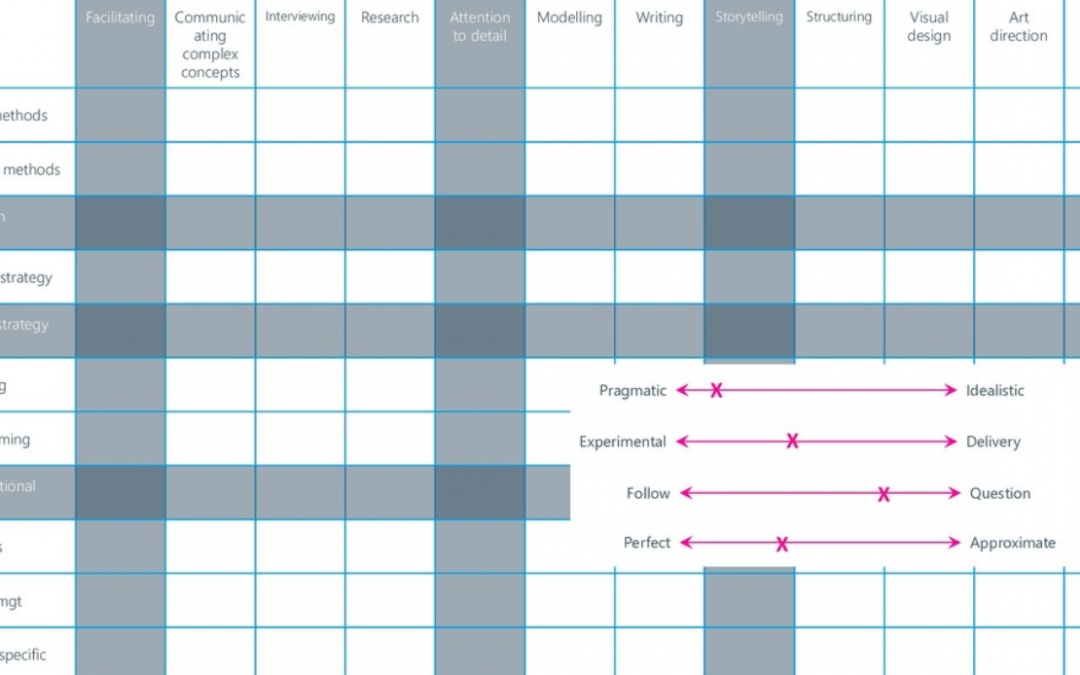
Communicating design
Design is becoming fairly mainstream, a part of many projects, and frequently discussed in the business press. But still many people think it is all about making an interface look better. Why is this still happening? Donna believes that there are many reasons this...
What designers do
What do designers do? This talk examines the spectrum of design skills - from tactical visual design through to strategic design. It describes what kinds of problems we can solve, what we deliver and who other than designers has these skills.
Journey mapping for content experiences
Journey maps usually describe a person undertaking a set of tasks with a product. Content strategists and information architects work less with tasks and more with research and learning. In this session, we'll talk about what...
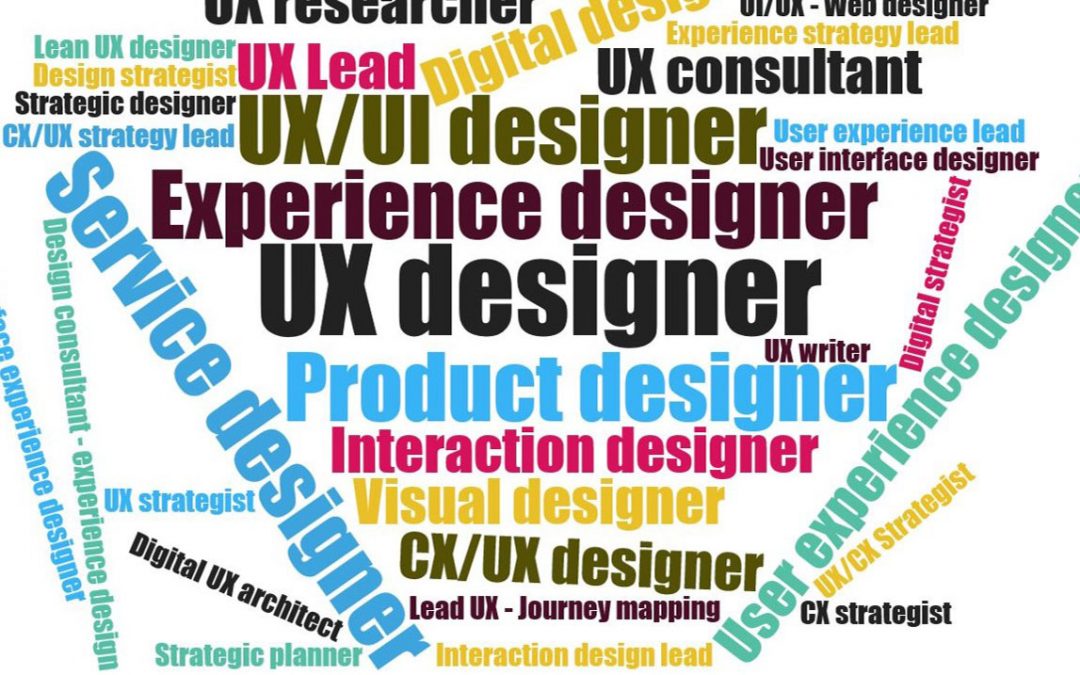
UX, UI, CX, SD, PD: Does it matter?
Designers often complain that other people don't know what they do. Let's explore why this happens through the lenses of social identity theory, category theory and linguistics to help understand why it happens and what we can do about it.

Industry keynote: The current state of design and design education
In 2006 I gave the industry keynote at OzCHI. I lamented the current state of user-centred design, expressed concern that there weren't enough skilled practitioners and suggested we should be focusing more on design and less on user-centred.Twelve years have passed....
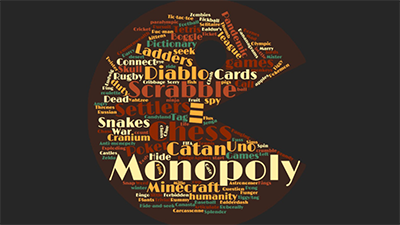
How not to be evil with categories
Presented at the UX Design Group of Melbourne Meetup
How to talk to Google Home
Lightning talk presented at Web Directions 'What do you know', Melbourne 15 March 2018

Lumping, splitting; us and them: How not to be evil with categories
As embodied humans we spend an incredible amount of brain power categorising everything we come into contact with - it's our way of dealing with huge amounts of detail. As designers, we take this into our work - using categories to make shortcuts and help get our...
Classification, cognition and the future of UX work
Come and learn about how categories, concepts and language work in our brains. An understanding of this is fundamentally important in any UX work that involves categorising, grouping and describing ideas with language. It’s only...
Designing A Conference Experience
In this episode, we hear Donna talk about: The art and science of designing a conference 2016 conference attendees selecting topics for presentations combining presentations into a coherent flow how to design the flow of people and their interactions between...
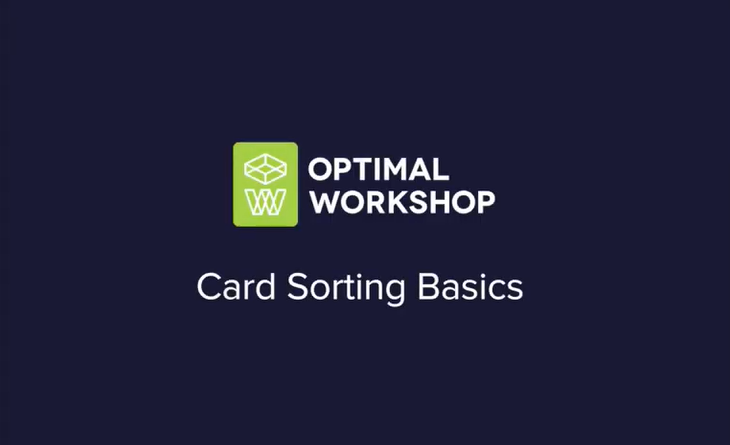
Card sorting basics (video)

IA keynote
Keynote presentation, World IA Day Singapore.
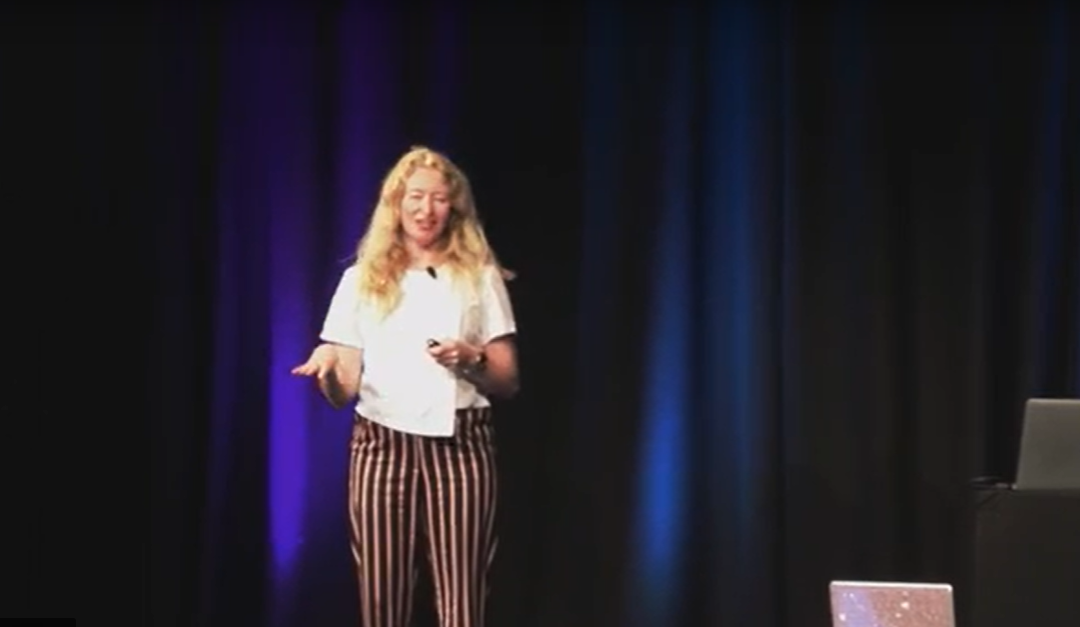
The FAQ of IA
In this presentation, Donna will talk about the questions that she's been asked over and over again in her 15 years of information architecture work. And she won’t only talk about the questions...she'll answer them too! Information architecture work is full of...
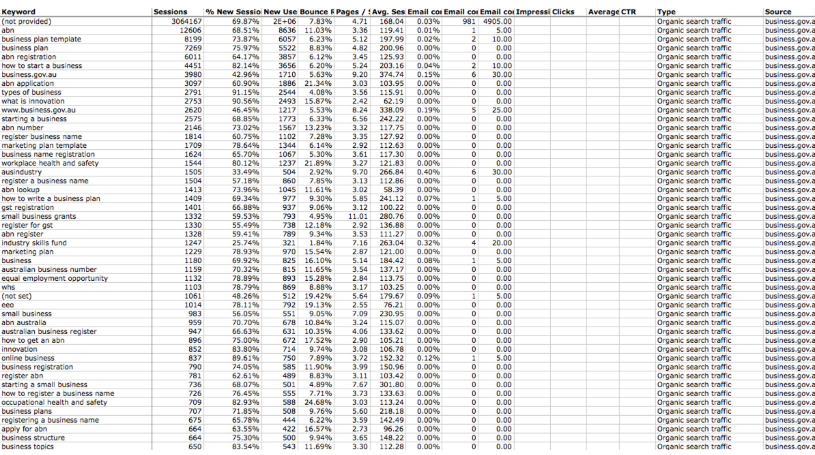
Search behaviours for government services
Donna recently undertook a crazy task – analysing 13,000 inward search terms to key government websites – just to see if there was anything interesting in the way people look for government services and information. Join her to learn what she found.
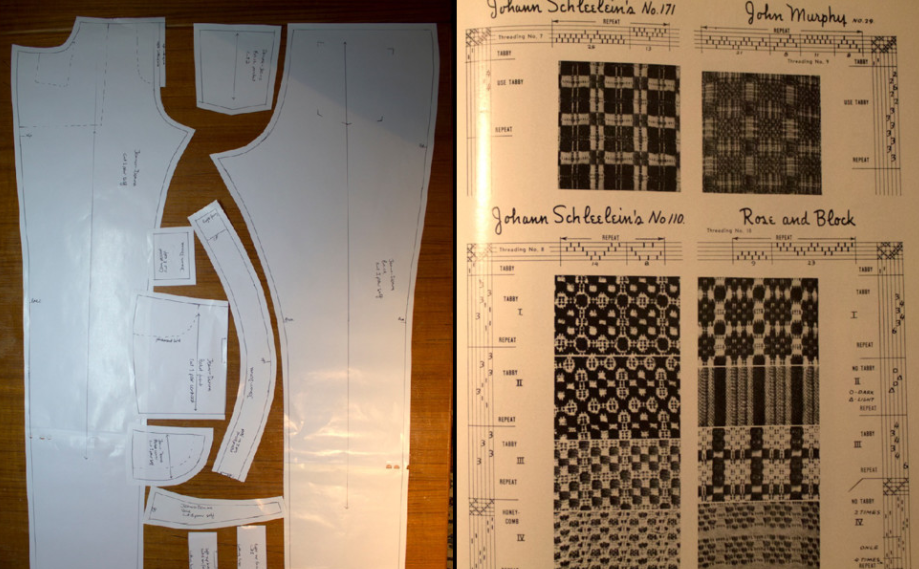
The materials of design
There are a wide range of design disciplines, all with surprising similarity in how they are practiced. But with such similarity, why is it almost impossible for us to move from one to another - why can't a digital designer move to architecture or a print designer to...

Navigating large sites on small screens
This presentation will explore the navigation challenge for large sites being used on small screens. It will go back to first principles and look at the purpose of various navigation types then explore ways of achieving the same goal via a small space.
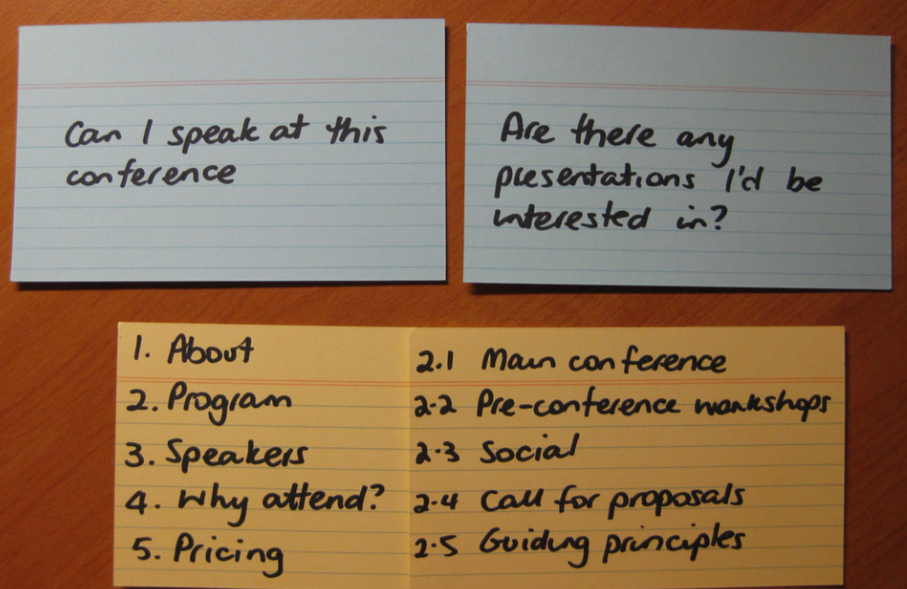
How to test an information architecture
Learn when & why to test, how to set up online and offline testing, how to run the test, how to interpret the outcomes and figure out what to do with what you learned. Find out more at UX Wellington Meetup.
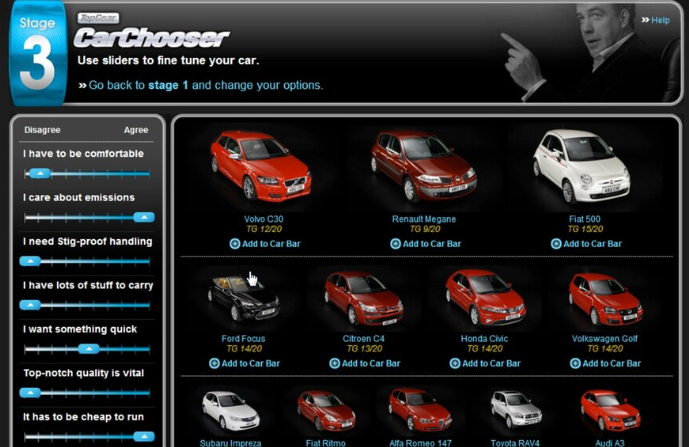
Introduction to information architecture
In this virtual seminar, you’ll learn all about information architecture – what it is, why it’s so important to do well and the major things to do and not to do.
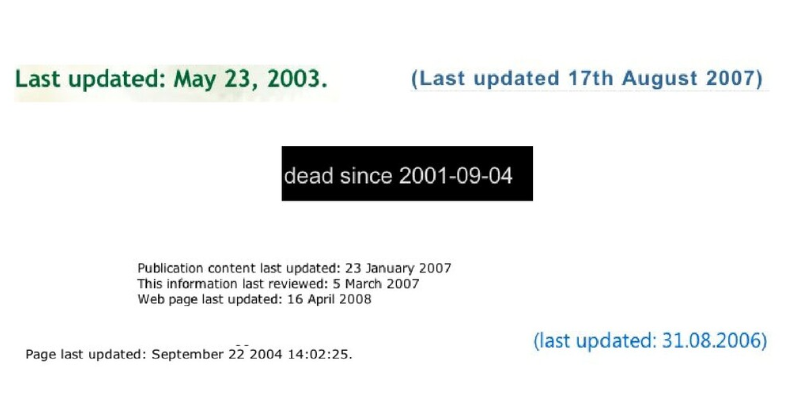
Keeping your content alive from cradle to grave
By now we all know that the web is not a publication — that it’s a living, evolving thing. But a lot of content I see still appears to be ‘published’ once and then left alone.
This talk is about what happens after content is published.
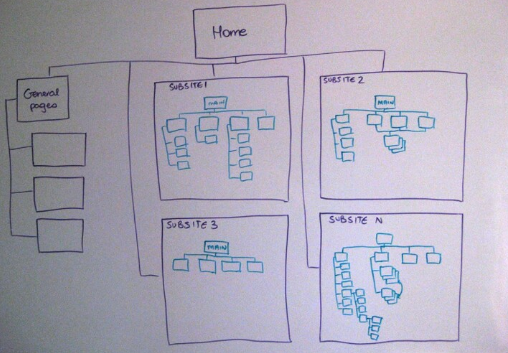
Information architecture patterns
This presentation will describe a wide range of commonly-used information architecture patterns, including hierarchies small and large, different types of database structure, hypertext, subsite models, sites with multiple entry points and ways of combining these (and more that I discover before April).
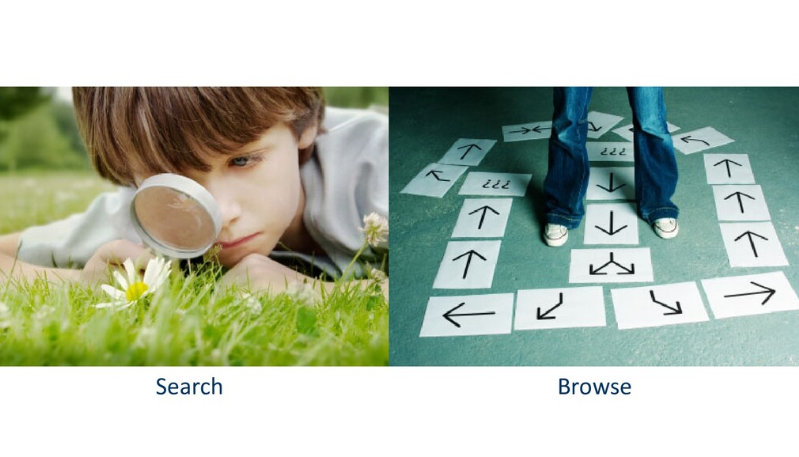
Information seeking behaviours: And how to design for them
When people use websites and intranets they are doing more than just ‘finding’ information. They may be looking for something they know about or exploring something brand new; filtering through large volumes then comparing results; getting an overview of a topic or...
Organisation schemes for web content
This is a preview for a virtual seminar I presented for UIE on organisation schemes for web content. It's only about 5 minutes, and has slides and audio.
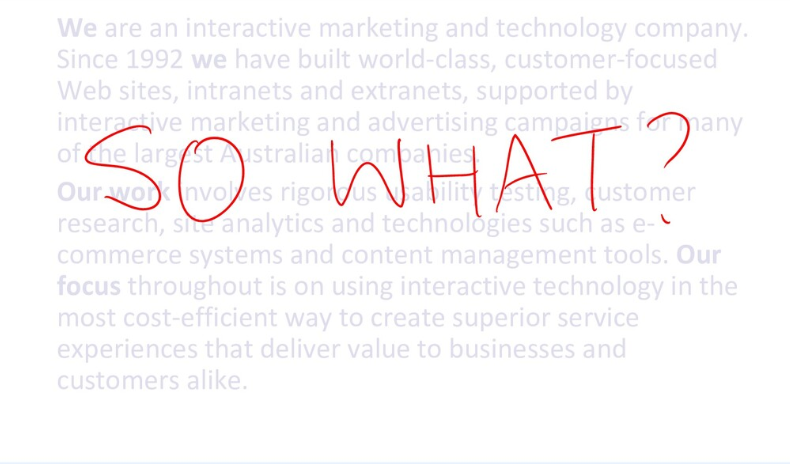
Getting content right
Web content can be vibrant, interesting and fun. It can draw you in, fill your head and make you learn without having to think. And it’s not really hard to write. This presentation covers three simple tricks to make your web content great.
Design games for information architecture
Would you like your design team to collaborate better? Are you looking to gather more valuable insights from your focus groups and interviews? Design games are a fun, technology-neutral way of gathering design insights for your projects. In this presentation, I will...

Web and content strategy
Web strategy, content strategy and writing for the web.

Involving Users: Why is it so hard to do the right thing?
Why is user involvement in projects the exception rather than the rule, despite the fact we know it is the ‘right’ thing to do? Taking a practical standpoint and without the boring and irrelevant theory, this presentation discusses the role of user involvement in web projects.

Designing to delight the information seeker
Finding information is not the user's goal. It's a means to an end. You need to look at what they desire. Maybe they desire to locate a fact to prove a point. Perhaps buy a product based on important criterion, or locate the best...
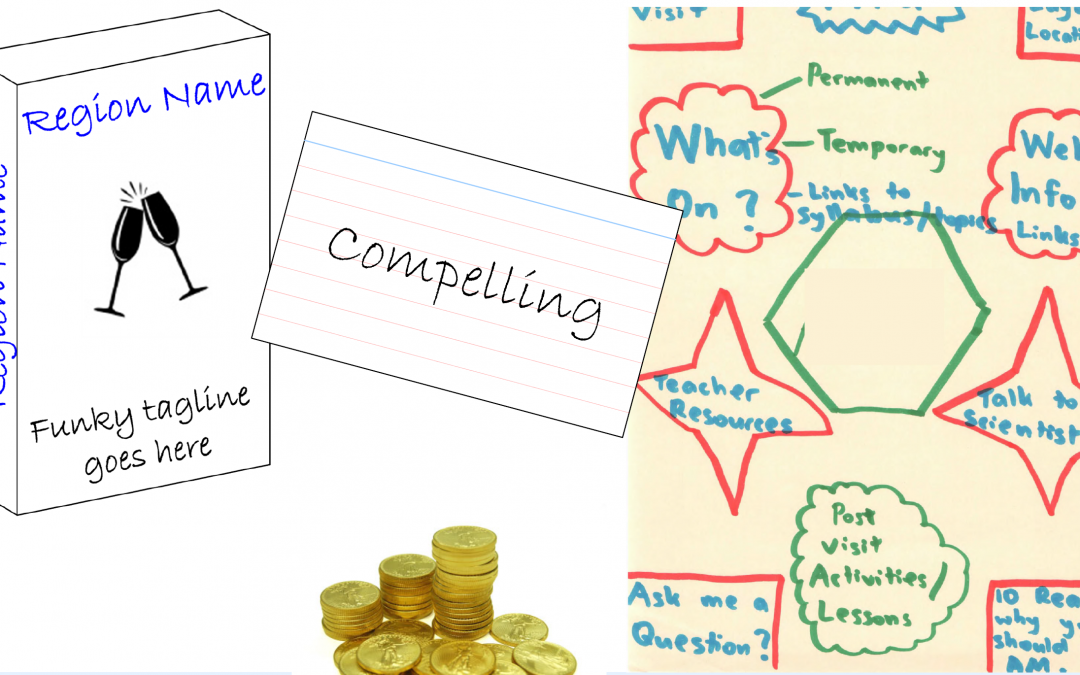
Design Games for Gathering Customer Insights
Design games are a fun, technology-neutral way of gathering design insights for your projects. In this presentation, Donna (Maurer) Spencer, an expert information architect, will show you how to take advantage of design games in many situations

Getting content right
Web content can be vibrant, interesting and fun. It can draw you in, fill your head and make you learn without having to think. And it’s not really hard to write. Three simple tricks can turn poor content into a great experience – remember that readers care more about themselves than you; write in real words with authentic voice; play show and tell.
What makes a great information architect (interview)
From the original article: This week, I had the pleasure of speaking with Donna (Maurer) Spencer, a world-renowned information architect and owner of the freelance agency MaadMob, based in Canberra, Australia. For nearly 10 years, Donna has been a prominent player in...
Wireframes for the Wicked
In this panel, three experienced designers will share their tried and true tips for making wireframes really work. We’ll talk about how to sketch a wireframe on the fly to demonstrate an idea and how to create a standalone wireframe deliverable; when to show a concept and when to describe nitty-gritty detail; how to make a narrative wireframe and how to make a specification wireframe
Involving Users: Why is it so hard to do the right thing?
Why is user involvement in projects the exception rather than the rule, despite the fact we know it is the ‘right’ thing to do? Taking a practical standpoint and without the boring and irrelevant theory, this presentation discusses the role of user involvement in web projects
Doing a great job on the web
This is a talk I gave at Murdoch Uni. I wasn’t sure what to call it, but it basically covers principles of good website work – user research, good IA, great content, setting priorities and maintaining good work
Information architecture: Beyond the hierarchy
n this presentation we’ll discuss when hierarchies are most useful and when an alternative approach is better. We’ll look at deliberate approaches such as metadata-driven databases and faceted classifications; and emergent approaches such as organic structures and tagging. We’ll examine good examples of each and learn what to consider for our own projects.

Ethical issues and information architecture
This presentation examines some of the ethical issues that we face as information architects, including:
- The myriad of effects of our design decisions on users
- Working with clients and peers
- The consequences of creating categories and classifying objects
- What inclusive design really means
- Personal beliefs and their role in projects
- How can we design for sustainability
The Pleasure and Pain of UX freestylin’
Two veteran UX/IA freelancers give the lowdown on the freelancing in our industry, and answer your questions.
Information architecture: Beyond the hierarchy
This presentation describes different structures available for information architecture. It examines hierarchies; database structures such as metadata-driven databases and faceted classifications; and emergent approaches such as organic structures and tagging. It examines good examples of each and what to consider for our own projects.

Lakoff’s Women, Fire & Dangerous Things – What every IA should know
In this presentation, I’ll examine the fundamentals of Lakoff’s theories and those scholars from which his theories draw. I’ll explain prototype theory and basic level categories and will discuss classical categorisation theory and how it fails to describe the real world we live in.
Usability for rich internet applications
This presentation explores Web 2.0 applications and some of the traps associated with designing for these newer forms of interaction.

Designing websites that work
This short presentation examines some of the non-technical needs to make a website project work – the right information, the right skills and adequate time.
User-centred design in practice: Is it working
In this OZCHI industry keynote I talked about 3 things:
- my take on where the practitioner user-centred design field is currently up to
- a look at some of the neat apps practitioners are interested in (and I didn’t say web 2.0 once)
- what I think we need to do to move forward
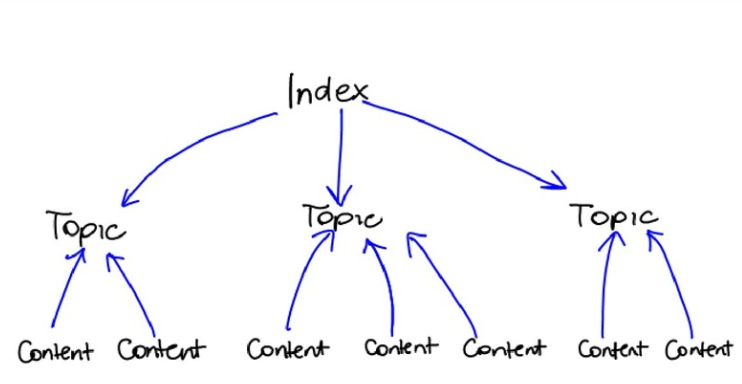
Information architecture: A how-to
This one-hour presentation covers all the ‘how to’s’ of information architecture: how to take a content inventory, analyse content, conduct card sorting, analyse user research, choose the right structure, create an information architecture and test it.
Information architecture: Beyond the hierarchy
For thousands of years humans have been organizing information in hierarchies - we start doing it early in life and continue through our careers. So it's not surprising that it is our dominant method for organizing content for websites and intranets. But there are...
Usability for rich internet applications
This presentation explored Web 2.0 applications and some of the traps associated with these newer forms of interaction.
Lakoff’s Women, Fire & Dangerous Things – What every IA should know
George Lakoff's book 'Women, Fire and Dangerous Things' is a fundamental work on categorization theory, explaining categorization from a linguistic and cognitive perspective. Many IA's (myself included) have had a paradigm shifting moment on reading it. But it is 583...
Deconstructing design: How did we get from there to here
In this presentation, I showed a number of completed site designs that I had been involved in. For each ‘deconstructed’ each design – pulled it apart to show how various inputs (such as research, activities, politics, guidelines, previous experiences) informed the design. The presentation highlighted that each design element is informed by more than one input; and that each input contributed to more than one part of the design. It also showed how important it is to undertake a range of research activities and not rely on just one or two inputs.
Identifying usability issues when testing
This presentation was for a software testing conference and discussed how to identify usability issues while undertaking software testing.
